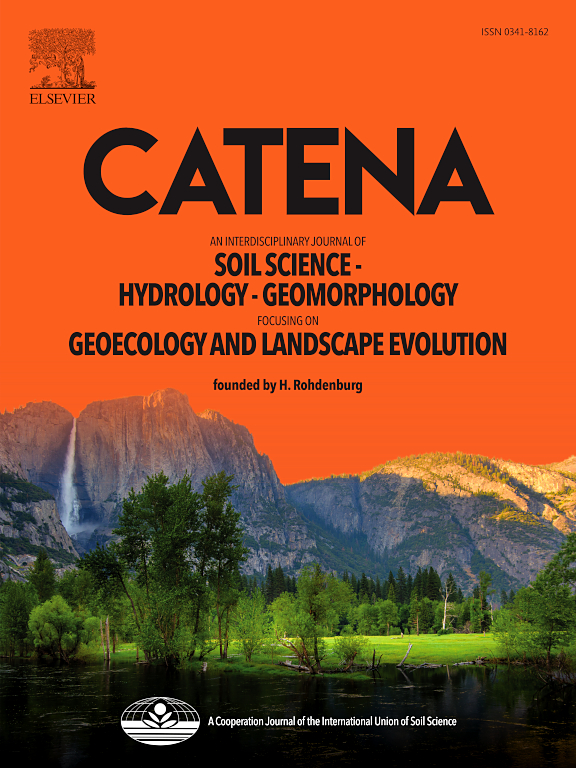Shallow soil depth and low soil moisture constrain soil pCO2 on hillslopes: Insights from field experiments and model comparisons
IF 5.4
1区 农林科学
Q1 GEOSCIENCES, MULTIDISCIPLINARY
引用次数: 0
Abstract
The partial pressure of CO2 (pCO2) in soil is a key parameter that affects both soil CO2 efflux and rock weathering processes. However, there is a lack of systematic studies of soil pCO2 and its driving factors in hillslope areas with a thin soil cover. We compared the results of a nearly three-year (2017–2019) monitoring study of hillslope soil pCO2 in four experimental plots (cultivated cabbage, natural grass, broadleaved forest, bamboo forest) in a subtropical karst trough valley in Southwest China. We found that high soil pCO2 occurred in the plots dominated by woody vegetation, while a higher soil temperature and soil water content (SWC) occurred in the two herbaceous plots. In addition, the deepest soil depth (∼40 cm) had higher pCO2 than the shallower soil depth (∼20 cm). We also found that SWC was the most important factor driving soil pCO2 changes (62.25 %, 54.94 %) in the two experimental plots under woody vegetation, whereas soil temperature was the main driver (91.46 %, 98.13 %) of soil pCO2 changes in the two plots with herbaceous vegetation. We applied several different models to simulate changes in soil pCO2 in field plots close to the experimental plots and found that these previous models need to incorporate soil depth as a controlling factor to generate accurate pCO2 results. The application of a modified soil pCO2 model showed that previous soil pCO2 simulations at the rock-soil interface on global hillslope and karst hillslope areas may be overestimated by nearly 79.0 % and 65.3 % respectively. These findings have potentially significant implications for future soil pCO2 simulations at regional and global scales.
求助全文
约1分钟内获得全文
求助全文
来源期刊

Catena
环境科学-地球科学综合
CiteScore
10.50
自引率
9.70%
发文量
816
审稿时长
54 days
期刊介绍:
Catena publishes papers describing original field and laboratory investigations and reviews on geoecology and landscape evolution with emphasis on interdisciplinary aspects of soil science, hydrology and geomorphology. It aims to disseminate new knowledge and foster better understanding of the physical environment, of evolutionary sequences that have resulted in past and current landscapes, and of the natural processes that are likely to determine the fate of our terrestrial environment.
Papers within any one of the above topics are welcome provided they are of sufficiently wide interest and relevance.
 求助内容:
求助内容: 应助结果提醒方式:
应助结果提醒方式:


